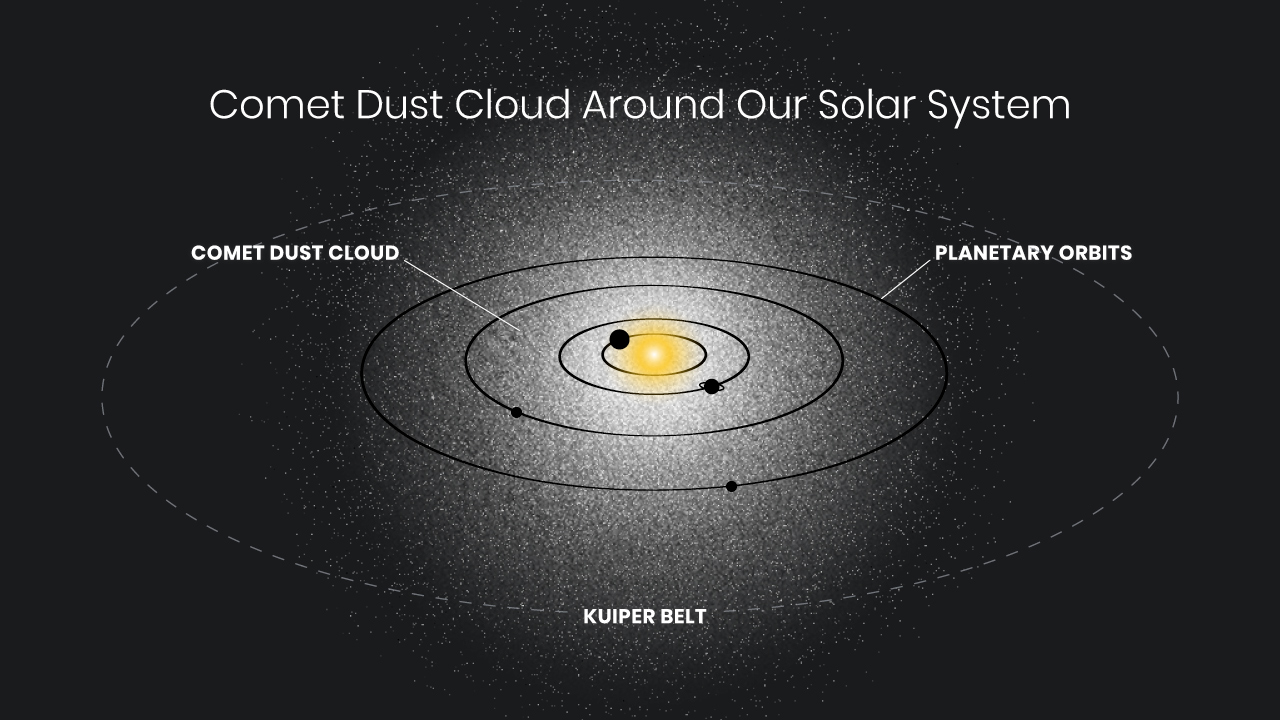Hubble Space Telescope spots haunting glow surrounding the solar system
It's equivalent to the glow of 10 fireflies spread across the entire night sky.

Did someone leave a light on?
The solar system is surrounded by an eerie ghostly glow that persists after all known light sources are accounted for, according to new research from the Hubble Space Telescope. The discovery suggests that models of the solar system's structure may have to be revised.
"It may be a new element to the contents of the solar system that has been hypothesized but not quantitatively measured until now," Tim Carleton, an astronomer at Arizona State University and lead author of the research, said in a statement.
Related: The best Hubble Space Telescope images of all time!
The findings came about when astronomers attempted to answer the question, "How dark is dark?" As part of a project called SKYSURF, the team sorted through 200,000 images from the Hubble Space Telescope, systematically eliminating the glow from planets, stars, galaxies, and from dust in the plane of our solar system and making tens of thousands of measurements to detect the residual glow in the night sky after these sources were removed.
They found a tiny excess of light, equivalent to the glow of 10 fireflies spread across the entire sky.
In a statement, NASA officials described this as being similar to walking into a room at night, turning out all the lights and closing the shades. Despite the darkening of the room, an eerie glow comes from the walls, ceiling and floor even after all light sources have been eliminated.
Get the Space.com Newsletter
Breaking space news, the latest updates on rocket launches, skywatching events and more!
While this might sound like a haunting scene facing a protagonist in a classic ghost tale, the eerie glow discovered around the solar system has a rational and definitely non-supernatural explanation.
The team thinks that one possible explanation for this solar system glow is reflected sunlight from a sphere of dust left behind by comets that are falling into the solar system. The solar system's background glow is smoothly distributed, which would match an origin with the innumerable snowballs of ice and dust that approach the sun from all directions.
As comets approach, heat from the sun causes solid material within comets to instantly transform into gas, or sublimate, causing an exhaust of dust and ice to burst free from the cosmic snowballs; this exhaust could then reflect back sunlight to create the eerie glow.
Such a shell of dust would represent a new addition to what astronomers know about the architecture of the solar system.
Cosmic 'ghost hunting' with Hubble and New Horizons
This isn't the first time astronomers have spotted a ghostly glow around the solar system. In 2021, NASA's New Horizons spacecraft also aimed to measure the background glow of the sky.
The probe had flown past Pluto in 2015 and is now heading out of our planetary system and into interstellar space, and it took measurements of the solar system at a distance of 4 billion to 5 billion miles (6.5 billion to 8 billion kilometers) from the sun.
New Horizons was beyond possible light contamination from planets and asteroids, but not yet affected by interplanetary dust, and it detected a faint background light that to this day remains unexplained, although one hypothesis is that it originates outside of the solar system when dark matter particles annihilate each other.
However, the light source from this earlier investigation seemed to be farther out than the glow discovered recently by the SKYSURF team.
"If our analysis is correct, there's another dust component between us and the distance where New Horizons made measurements," Carleton said. "That means this is some kind of extra light coming from inside our solar system."
The idea to use Hubble data to search the solar system for this ghostly light came from veteran astronomer Rogier Windhorst at the Arizona State University, who saw important information encoded in photons that astronomers usually ignored.
"More than 95% of the photons in the images from Hubble's archive come from distances less than 3 billion miles [4.8 billion km] from Earth," Windhorst said. "Since Hubble's very early days, most Hubble users have discarded these sky-photons, as they are interested in the faint discrete objects in Hubble's images such as stars and galaxies."
The team's research is published in two papers published in October and November in the Astronomical Journal and the Astrophysical Journal Letters.
Follow us on Twitter @Spacedotcom or on Facebook.
Join our Space Forums to keep talking space on the latest missions, night sky and more! And if you have a news tip, correction or comment, let us know at: community@space.com.

Robert Lea is a science journalist in the U.K. whose articles have been published in Physics World, New Scientist, Astronomy Magazine, All About Space, Newsweek and ZME Science. He also writes about science communication for Elsevier and the European Journal of Physics. Rob holds a bachelor of science degree in physics and astronomy from the U.K.’s Open University. Follow him on Twitter @sciencef1rst.









